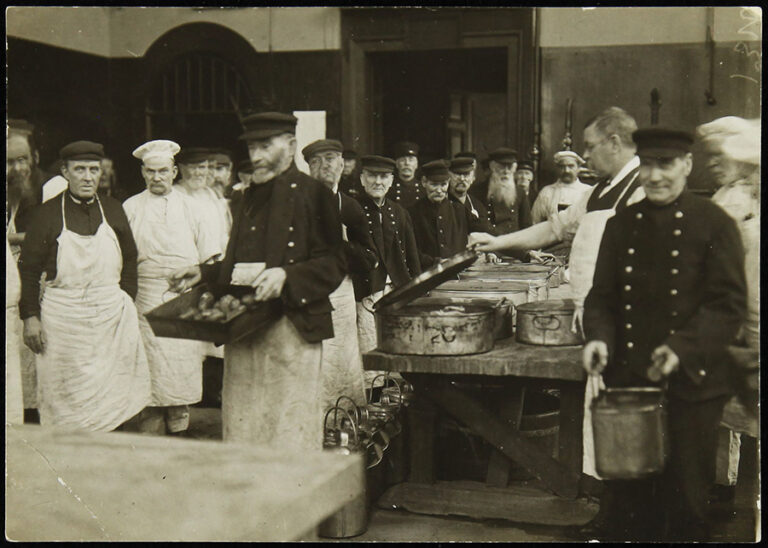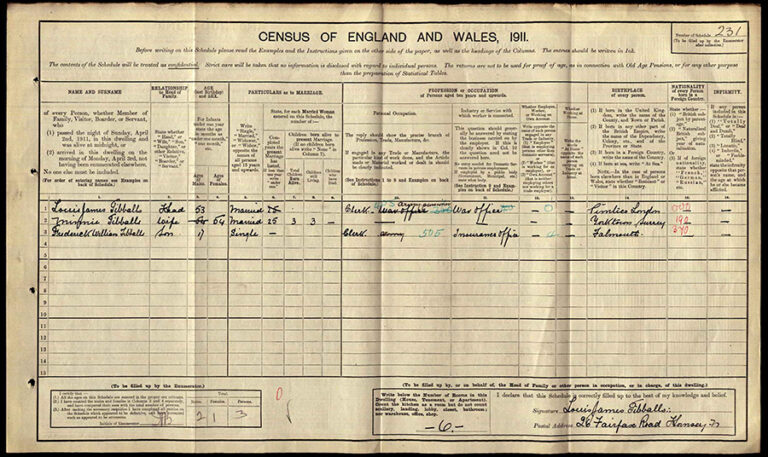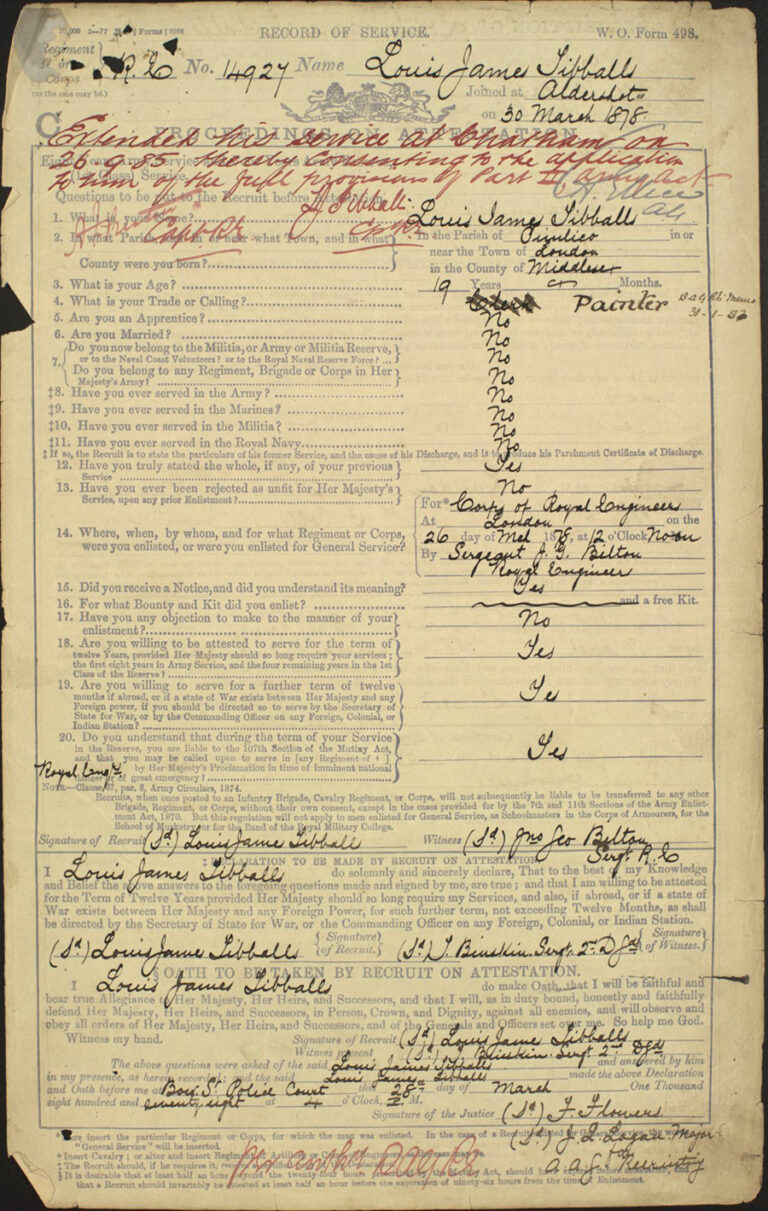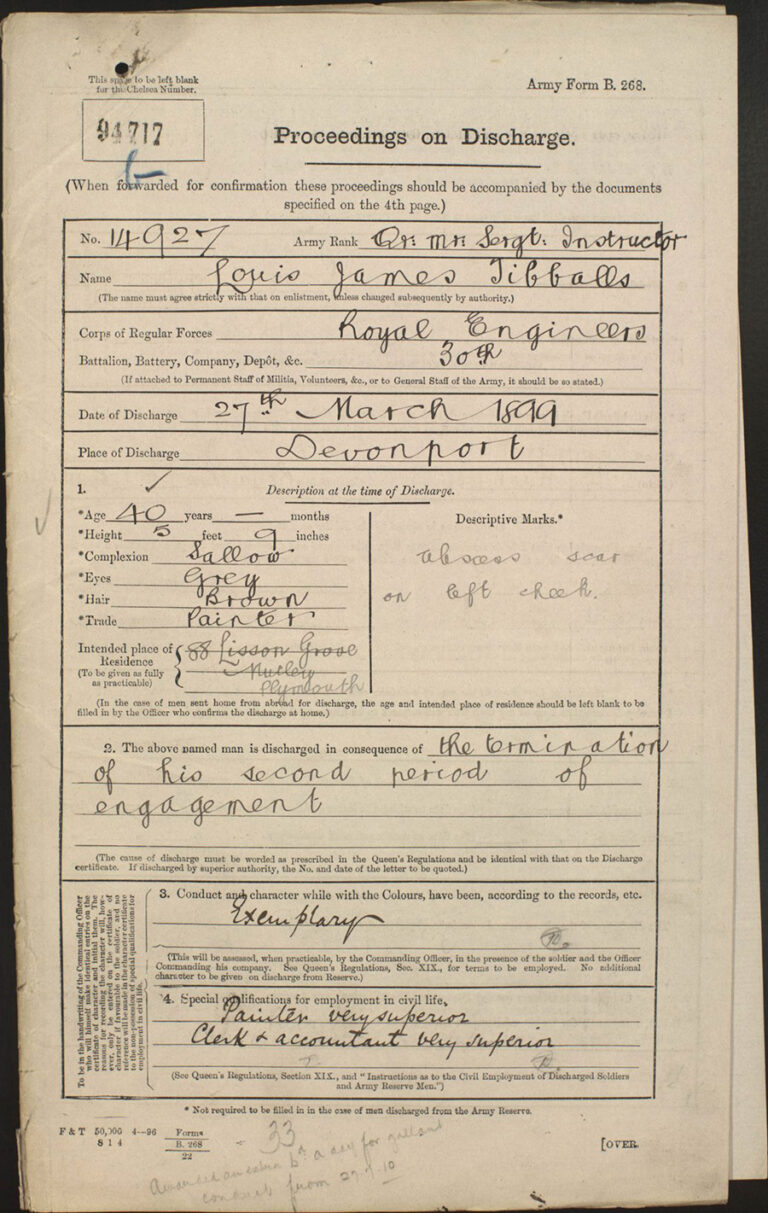This month, The National Archives launched the Scarlets and Blues project, which is now open to volunteers. The project invites volunteer transcribers to take a behind-the-scenes look at the lives of people at the Royal Hospital Chelsea around the time of the First World War. Scarlets and Blues is a key component of the Arts and Humanities Research Council-funded research project Engaging Crowds: Citizen research and heritage data at scale, which is part of the Towards a National Collection research programme.

The records of the meetings of the Board of the Royal Hospital Chelsea (RHC) contain a wealth of information waiting for the researcher to take those additional steps and uncover the rich lives of those recorded on the page. Along with details about how individuals would be cared for, as well as administrative and legislative changes to the hospital, the minutes also contain a significant number of names – of pensioners, nurses, gardeners and other employees who all interacted and spent a substantial proportion of their lives at the RHC.
Starting with a name, it is often possible to trace an individual and their family throughout much of the latter 19th and early 20th centuries, using many documents also available at The National Archives. Most of which have been digitised and are available from many partner websites (charges apply) or through The National Archives directly. Doing this can transform what are simply names on a page, colouring in details of their lives (while demonstrating that these were indeed people), and enriching our understanding of those involved at the RHC, both before and during the First World War.

In part 1 of this series, let us take Louis James Tibballs who, detailed in a meeting of the Board of the RHC dated 24 February 1916, was transferred from the War Office to work at the RHC. It is stated that he is an ex-soldier, Class B. The fact that he was an ex-soldier gives us a number of opportunities to find out further information about his service. In fact, Tibballs’ service record is available in the Chelsea Pensioners Army Service Record series in WO 97 at The National Archives, because he served for a period of 21 years and so was entitled to a pension as a result.

We see from this record that Louis joined the Royal Engineers at Aldershot on 30 March 1878. He lists his age as 19 years and 4 months (meaning that he was born in around December 1858), born in Pimlico, London, and states that he was a painter (though clerk is also written here and has been crossed out). In the various documents available as part of his service record, we find that he was 5 feet 9 inches in height, had grey eyes and brown hair. We see that upon leaving the army he had attained the rank of Quartermaster Sergeant Instructor, and possessed medals for service in Egypt and also served in Malta and Mauritius. He was discharged at the age of 40 in 1899.

We can also pick up Louis’s story in various other records. We get an insight into his family life after his army service through the 1901 and 1911 censuses. He is living in 104 Beresford Road, Tottenham, with his wife Minnie (née McEvoy), whom he had married in 1885, and at this time his occupation is listed as Clerk/Accountant. The 1901 Census shows that they had three sons: Louis Victor (aged 13); Percy Arthur James (aged 9, who was also born in Mauritius whilst his father was on service there); and Frederick William (aged 6). In 1911 Louis Snr is listed as a ‘Clerk – Army Pensioner’, while his youngest son Frederick, the last of the three brothers still living at home, is listed as ‘Clerk Army’.
This is where we can pick up their stories as they relate to the First World War. We know that Louis Snr was employed both at the War Office and the RHC, presumably because of his expertise and past experience – having reached the rank of Quartermaster Sergeant tells that he was clearly a good administrator. Louis Jnr appears to have followed the same path as his father and was a Sapper in the Royal Engineers, while Percy had joined the armed forces as a Private but was later commissioned as a Lieutenant in the London Regiment, specifically working in the Army Ordnance Depot (the Medal Index Card for the brothers can be found in WO 372/20/27074).
By this time, Frederick had also been commissioned as a Lieutenant, in the 2nd Battalion, Royal Fusiliers, and was awarded a Military Cross at Ploegsteert on 4/5 September 1918. The citation for the award, listed in The London Gazette, stated that ‘he showed quickness and initiative in selecting posts for his company under heavy fire, and when a powerful outflanking movement was started against his right, he organised his defence with great resource, encouraging his men to repulse the attack, although continuously under heavy machine-gun and snipers’ fire’. The Battalion’s War diary for that day noted that it had suffered 9 killed, 29 wounded, and 6 were missing during this action (you can see the battalion War Diary in WO 95/2301/3 and view Frederick’s Medal Card in WO 372/20/27074).

Louis Snr is listed to have died in 1938, outliving Minnie, who had died in 1927. We also find Frederick in the 1939 Register living in 65 Hawthorne Avenue, Croydon, London. He had attained the rank of Captain in the army, and is listed as married to Gladys (née Thorne, whom he had married in Grantham, Lincolnshire in 1923). He lived until 1967, and is buried in the village of Woldingham in Surrey.
Keep an eye out for part 2 of the blog series later this week and be sure to have a go at some transcription on the Scarlets and Blues project page.
